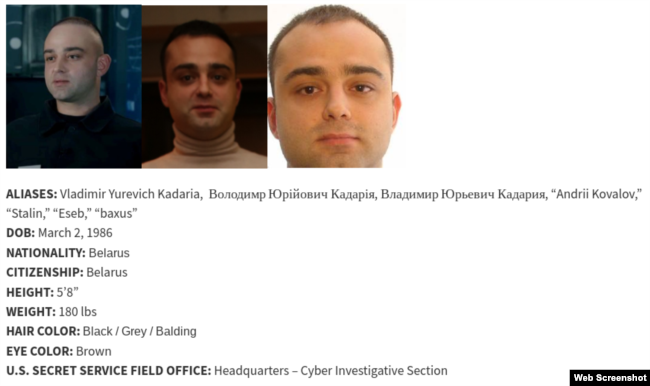Who Are Vietnam’s Montagnards And What Are Their Grievances? – Analysis
By RFA
By Mike Firn
Montagnard activist Y Quynh Bdap from Vietnam is on trial at Bangkok’s Criminal Court, facing extradition to Vietnam where he has been convicted of “terrorism” in connection with a deadly 2023 attack, which he denies.
Bdap is a founding member of Montagnards Stand for Justice (MSFJ), which campaigns for the rights of the indigenous group in Vietnam. In March, the nation listed MSFJ as a terrorist organization.
Who are the Montagnards?
Montagnard is a term meaning “mountain dweller” coined by French colonialists to describe a grouping of about 30 indigenous minorities in Vietnam’s Central Highlands. Many of them are Christian.
The minorities in the Central Highlands have long been wary of outside interference and have been at odds with governments, including U.S.-backed South Vietnam before 1975, and the communist government of Vietnam afterward.
In the 1960s, many Montagnards were part of a group called FULRO, that campaigned for autonomy for indigenous people. During the Vietnam War, Montagnards helped U.S. forces as they tried to interdict North Vietnamese forces and supplies entering South Vietnam.
Analysts said Vietnam has never forgiven them for that action.
In the United States, where many Montagnards resettled after the war, their plight is viewed sympathetically. The community in North Carolina is hailed as the largest population of Montagnards outside Vietnam.
What are their grievances?
Land and religious freedom are at the heart of Montagnard grievances.
Beginning in the 1990s, the government encouraged the migration of ethnic Kinh Vietnamese into the Central Highlands to grow coffee, putting them at odds with the Montagnards who practiced swidden, or slash and burn, agriculture.
Since 1975, over 3 million people have moved into the region. According to government statistics in 2019, Montagnards accounted for 39% of Dak Lak province’s total population of 5.8 million.
Many Montagnards are Evangelical Christians and they have said that authorities try to stop them gathering to practice their faith and disrupt their church services.
On March 8, villagers in Dak Lak province found the body of preacher Y Bum Bya hanged in a cemetery. The Central Highlands Evangelical Church of Christ released a statement saying Bya was killed after being beaten and threatened by police.
Frustration over religious persecution and land grabs has sometimes boiled over into violence.
In the early 2000s, violent protests against the confiscation of ancestral lands and religious controls prompted a crackdown by Vietnamese security forces that saw hundreds of Montagnards charged with national security crimes.
On June 11, 2023, dozens of Montagnards attacked the headquarters of the People’s Committee and the police of Ea Tieu and Ea Ktur communes in Dak Lak province. Four police officers, two commune officials and three civilians died in the attacks.
In January, 100 people were convicted over the attacks, with 10 jailed for life.
Representatives of the minority said they want indigenous land rights and basic human rights and they reject what they said are government attempts to link them to overseas separatists.
What does Vietnam say?
Vietnam does not use the term Montagnard, which it says implies disparagement. It uses the term Degar to refer to non-state sanctioned Protestant Montagnards in the Central Highlands.
The Vietnamese government said it is a multi-religious state with freedom of religion where minorities can “promote their internal resources and jointly develop the country.” It said people with “bad intentions” take advantage of the concept of “indigenous people” to spread false information and incite secession.
What does the international community say?
Over the years, International human rights groups have called on Vietnam to end the repression of Montagnards, to allow independent religions organizations to act freely and release all Montagnards imprisoned for peaceful religious or political activity.
On June 14, a group of U.N. Special Rapporteurs wrote to the Vietnamese government raising their concerns about the Dak Lak terrorism trials. They said there had been an “excessive response,” an unfair mass trial and reports of intimidation of Vietnamese refugees in Thailand seemed “part of a larger and intensifying pattern of discriminatory and repressive surveillance, security controls, harassment and intimidation.”
Rights groups said Thailand has given Vietnamese law enforcement operatives free rein to track down and kidnap activists seeking refuge there.
In April, 2023 Vietnamese blogger Duong Van Thai was allegedly abducted by Vietnamese agents in Bangkok, later emerging at a detention center in Hanoi. In February, 2019, journalist and Radio Free Asia blogger Truong Duy Nhat was abducted in Bangkok and forcibly returned to Vietnam, where he was jailed for 10 years.
Montagnards who have trekked through border jungles to neighboring Cambodia risk being sent back to Vietnam. In June 2023, then-Prime Minister Hun Sen said all Montagnards who had taken refuge in Cambodia had been expelled and any new arrivals would be returned to Vietnam in light of the attacks in Dak Lak.
This undated photo taken from Facebook shows Y Quynh Bdap before his arrest by Thai Police. [Y Quynh Bdap via Facebook]





![This undated photo taken from Facebook shows Y Quynh Bdap before his arrest by Thai Police. [Y Quynh Bdap via Facebook]](https://www.eurasiareview.com/wp-content/uploads/2024/09/a-37-800x445.jpg)








